Good pottery appears to be cool and silent — something vulnerable that, with luck, can outlast many human generations. A white porcelain dish seems calm and decorous; one knows that skill went into its evenness, into the exact whiteness, into its lightness. But when I began to think about pots I had no idea of the extreme violence, happenstance and risk that are an intrinsic part of the maker’s art. The chemistry is complex; the potter needs to study it intimately — the composition of different clays, of glazes, of rare and valuable pigments (cobalt for instance), and of the firewood that makes the fire.
Pottery-making can be poisonous from fumes, and tasting deadly dyes. The history of the art is littered with terrible disasters. The Martin brothers laboured for whole years on kilns full of splendid work and lost it all in explosions or meltdowns. The physics is charged with trepidation and violence too. In the 16th century Bernard Palissy strove to find a way to make Chinese white porcelain — he was a great potter and scientist — and failed. He stuffed his furniture and, it is said, his floorboards into a kiln to keep up the heat, and nevertheless failed.
Edmund de Waal is a man with a vocation — or, as it turns out, two or three interlocking vocations. He tells us that he knew he wanted to make pots from the age of five. One strand of this book is an account of his own work: discoveries, failures, changes of direction. Of these the most important was his rejection of the post-war orthodoxy about the virtues of ‘honest’ brown earthenware, which had begun with William Morris, and his shift to the fineness and difficulty of white porcelain. He tells us about his own early brown works:
Dishes, unglazed, rough oatmeal brown on the outside and green on the inside, pots to disappear into the landscape. No one bought them. No one liked them.… They were needy. And once you recognise neediness in an object it is difficult to live with. The fluidity of your life with it curdles.
When de Waal wrote his splendid The Hare with Amber Eyes, he presented himself very much as an amateur writer — he had thought it wouldn’t take long, he ingenuously said. Now, he claims that pottery ‘needs’ writing (although many ceramics students I have known seem happy to do without words) and he writes very much as though this too is a vocation. He studied English literature at Cambridge, and is formidably well-read in several languages.
This book is a history of the making of porcelain — its discovery and rediscovery — from ancient China to Dachau. De Waal’s third vocation is travel: he likes to be in the place where something happened or is happening, to see for himself. So he visits Jingdezhen in China, and then Venice, Versailles, Dublin, Dresden, the Appalachian mountains of South Carolina and the hills of Cornwall. In each of these worlds he has an interlocutor from that time and place — a Jesuit priest in China in the early 18th century; a researcher in 1694 in Dresden and the mad boy genius he works with; a Quaker in 18th-century Plymouth; officials in modern Dachau.
Mixed in with this history is a kind of autobiographical account of de Waal’s own work. He says he thinks with his hands, and he is amazingly skilled at telling us what is happening as he feels the clay, turns the wheel, unloads the kiln. There is a wonderful passage where at 3 a.m. in China he tries to put himself to sleep by counting his own pots:
All the bowls and lidded jars and dishes that I’ve made to emulate Chinese porcelains, the ginger jars and the celadon bowls and wine cups, and the large dishes with the pairs of fishes, head to tail, that I made as wedding presents. The bodged earnest attempts to make pots that had some of the ease, deftness and poise of the most basic bowl from this city. To make myself into a potter through my attachment to Chinese pots.
From there he goes on to counting his Herefordshire pots — bringing Herefordshire to vivid life in one paragraph. He writes of discovering his vocation.
The book is constructed in a series of incidents and meditations. De Waal is a master of juxtaposition and we feel the overall form as we read, while the episodic nature of the telling leaves room for startling surprises. Some are technical, such as the use of copper red glazes — sang de boeuf — in 18th-century China, and the glaze named ‘drunken beauty’ in China, or ‘peach bloom’ by a western scholar:
This glaze, too, is ludicrously difficult to achieve. Copper lime pigment has to be sprayed through a long bamboo tube with a fine silk covering at the end onto a layer of transparent glaze, onto which you put another layer of transparent glaze, onto which you then put another layer of transparent glaze before you fire it.
He gives us staggering lists of pots made for emperors and for Chairman Mao. He tells us precisely about Augustus of Poland in the 17th century who inherited 16 pieces of Ming dynasty, caught what he himself referred to as ‘la maladie de porcelain, die Porzellankrankheit, porcelain sickness’, and ended up owning 35,798 pieces of porcelain when he died.
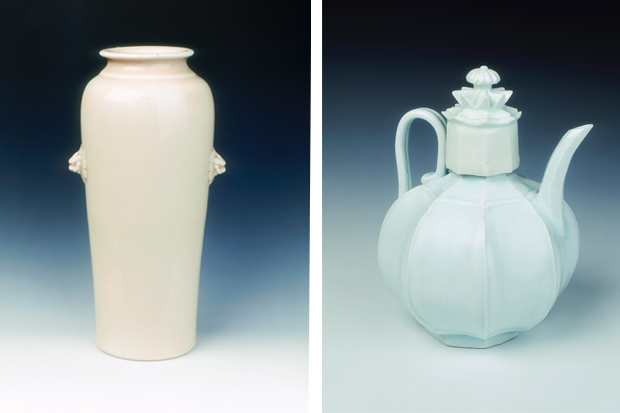
He tells us about the lengths to which rulers and artists would go to keep the secrets of their craft. Everything is a secret around porcelain. The formulae themselves are ‘deposited, locked up and secured in a box with three different locks and keys, one of which shall be in the hands of the inventors’ (this in 1740s Britain).
He finds ludicrous and terrible things, such as revolutionary ceramics in China — not the usual ‘Maos and pretty factory girls’ — but terror: a kneeling girl wearing a dunce’s cap, watched by minatory women, an execution ‘with the head of a man rolling towards us’.This is ludicrous in one way. He tells us about Mao’s Four Pests Campaign in 1958:
the attempt to destroy all rats, flies, mosquitoes and sparrows. Sparrows were to be scared from landing until they dropped from the skies.
This is ludicrous in another way.
He tells us this in Dachau where the Allach porcelain factory moved, and found the prisoners useful. They made figurines for Hitler and Himmler, both of whom were addicted to white. They made porcelain maidens, stags, and SS officers. De Waal is shown a porcelain Bambi. Terribly ludicrous.
All the way through the book he returns to white, its beauty, mystery, and also terror. He quotes Swedenborg. who claims that white is truth, white is wisdom, white is angels and ‘the White Horse mentioned in the Revelation’. He quotes Melville’s great chapter in Moby-Dick on the whiteness of the whale, where white is terror as well as beauty, and is ‘the visible absence of colour — a dumb blankness in a wide landscape of snows — a colourless all-colour of atheism from which we shrink’.
De Waal makes an installation of 2,455 pots. It is called Atemwende, Breathturn, a word invented by the great Paul Celan. In this exhibition he uses
all the accomplished, attempted, consolatory, melancholy, minatory, lambent whites from my journey. All the whites from Jingdezhen, ‘white as congealed mutton fat’, and Kakiemon and Nanjing and Tibet and Venice and Saint-Cloud and Dresden ‘milk-white like a narcissus’ and Meissen and Coxside on the Plymouth docks, ‘white like smoke’, and Bristol and Etruria and Carolina and St Petersburg and the Bauhaus. And Allach.
What will he need to write about next?
Got something to add? Join the discussion and comment below.
Get 10 issues for just $10
Subscribe to The Spectator Australia today for the next 10 magazine issues, plus full online access, for just $10.
Available from the Spectator Bookshop, £17 Tel: 08430 600033. A.S. Byatt’s novels include The Biographer’s Tale, The Children’s Book and the Booker-winning Possession.
You might disagree with half of it, but you’ll enjoy reading all of it. Try your first month for free, then just $2 a week for the remainder of your first year.

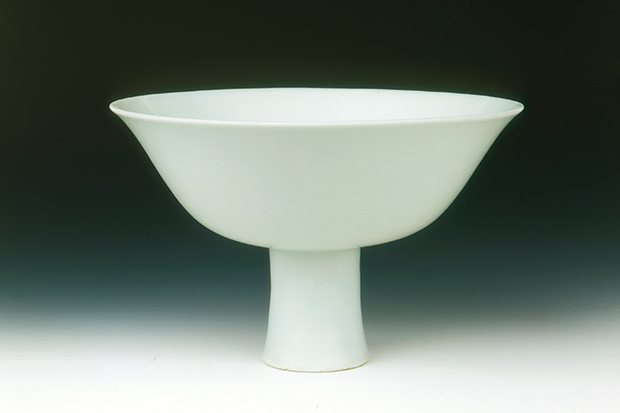


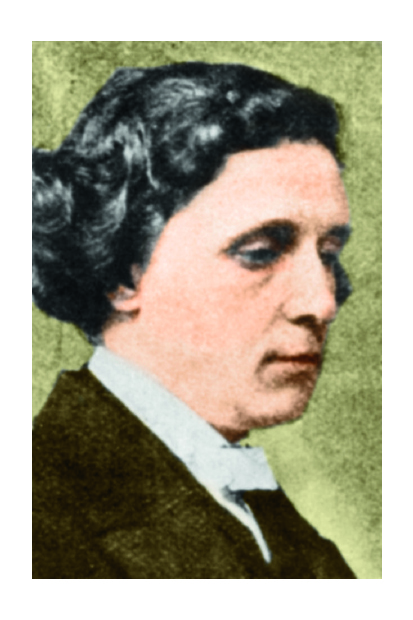

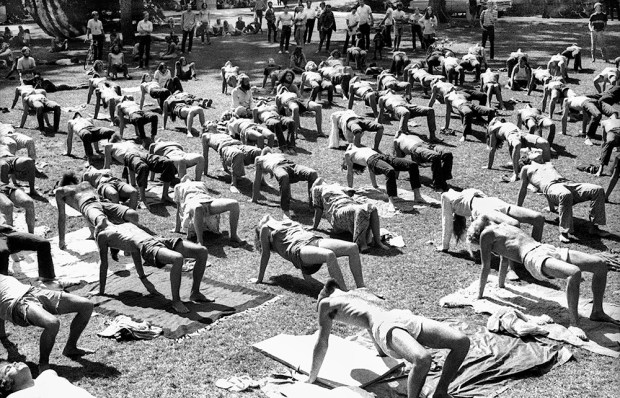
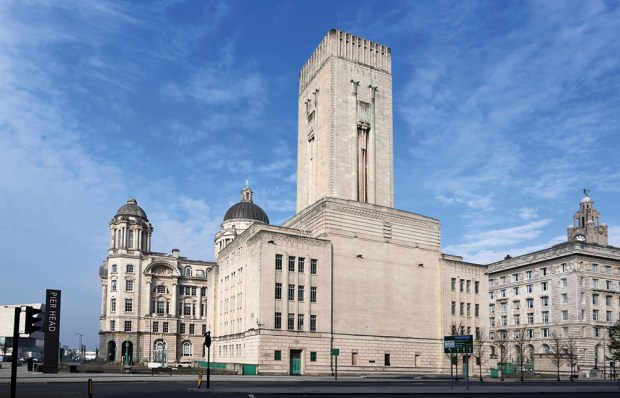






Comments
Don't miss out
Join the conversation with other Spectator Australia readers. Subscribe to leave a comment.
SUBSCRIBEAlready a subscriber? Log in